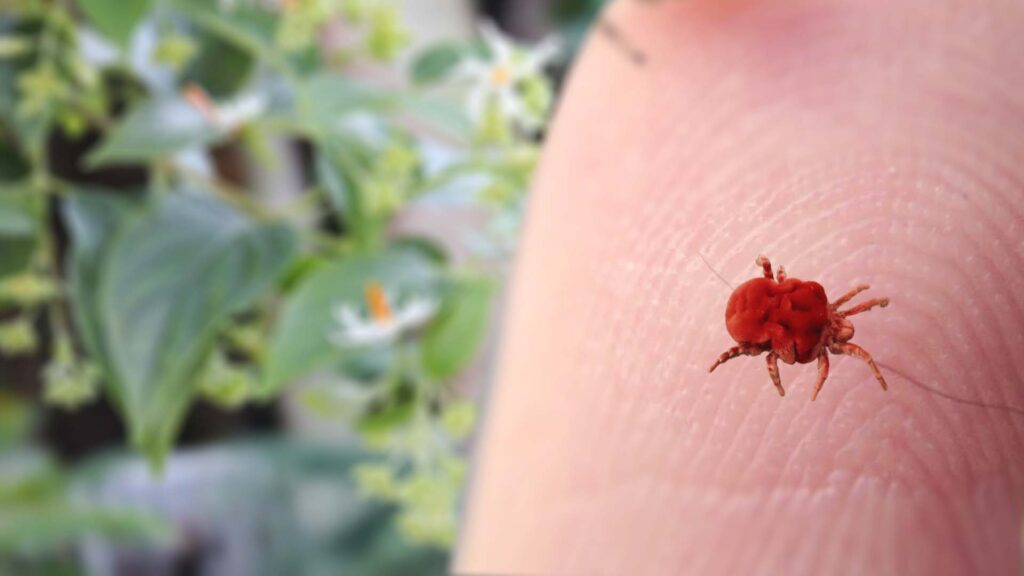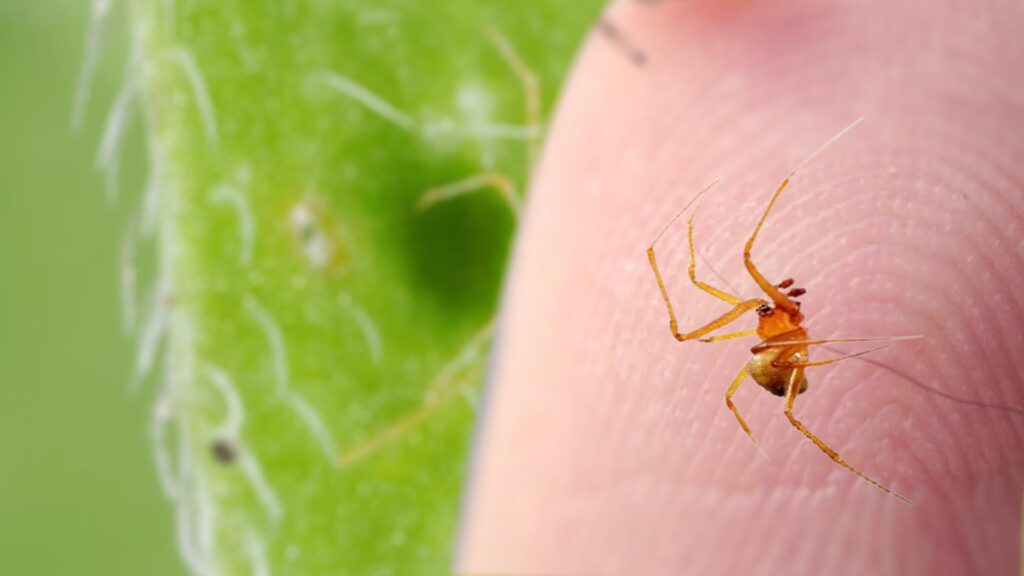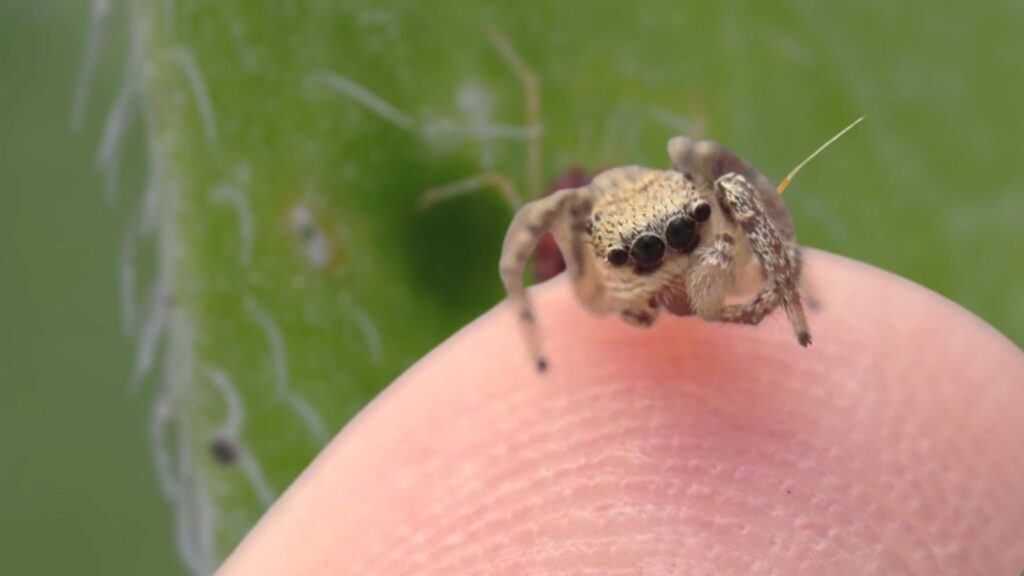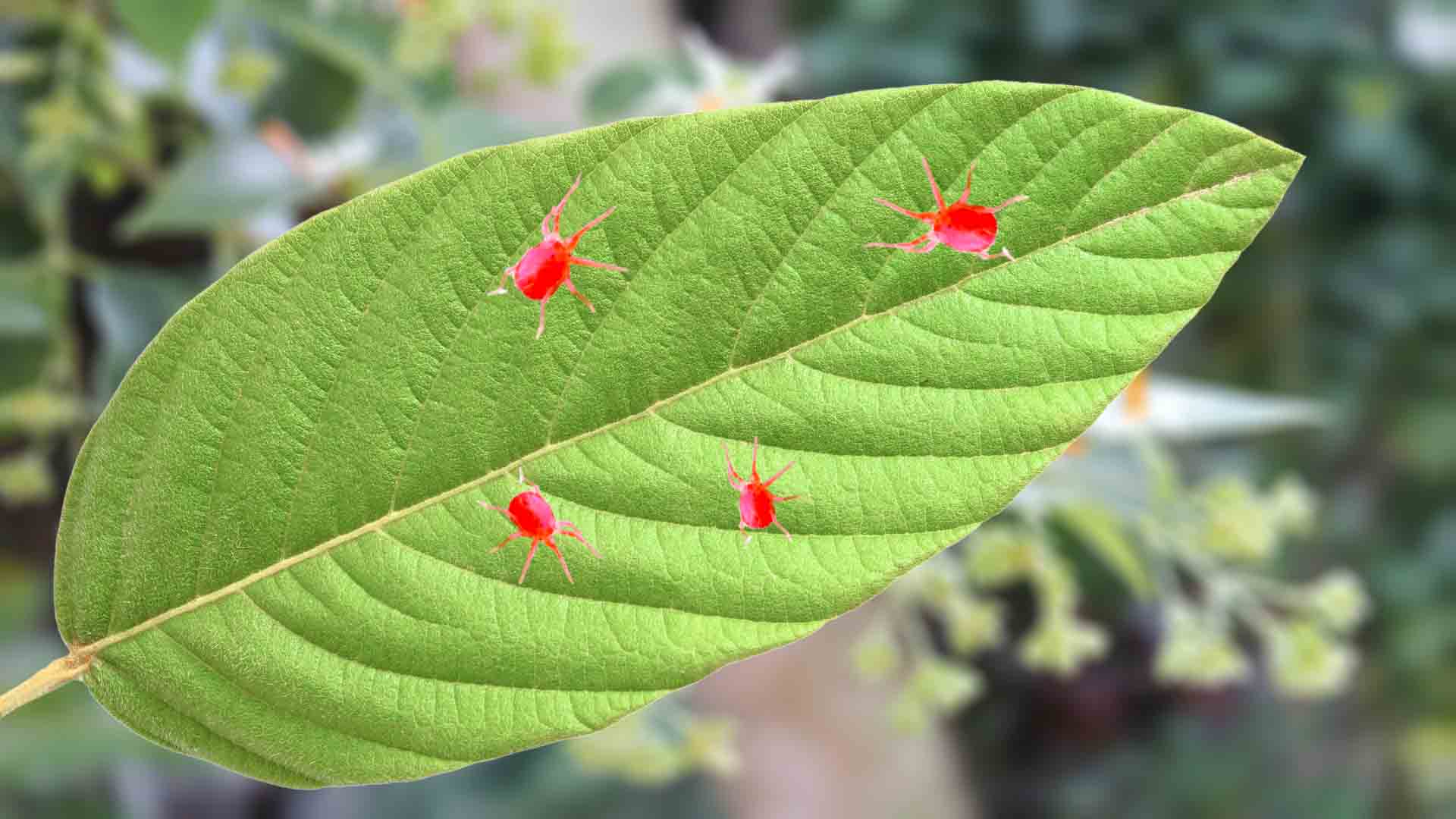Discovering small red spiders in your home can be both surprising and concerning. However, not all of these arachnids are harmful or invasive pests. Small red spiders occasionally found inside homes can include various species. It’s essential to identify these arachnids correctly to determine whether they are pests or harmless houseguests and take appropriate measures if necessary.
Here we will discuss seven small red spiders you might come across in your house.
Small Red Spider
There are seven small red spiders including Red Spider Mite, Clover Mites, Red House Spiders, Jumping Spider, Red Velvet Mite, Strawberry Spider, and Mite (Chiggers). These spiders occasionally found inside homes can include various species, each with its own characteristics and behaviors.
While some of them, like Red Spider Mites and Clover Mites, can harm plants but not humans, others, like Red House Spiders and Jumping Spiders, are generally harmless and even beneficial in controlling insect pests.
Red Spider Mite

Red spider mites, often found in gardens and indoor plants, are tiny arachnids that measure less than 1mm in length. They are known for their vibrant red color and are notorious for damaging plants by feeding on their sap. Red spider mites are not a threat to humans or pets and are typically found outdoors, though they can occasionally make their way inside on plant pots or clothing.
Red spider mites, or Tetranychus urticae, do not pose a direct threat to humans. These small red spiders are not known to bite, sting, or carry diseases. However, they can cause significant damage to plants, both indoors and in gardens.
These tiny arachnids feed on plant sap by piercing the plant cells with their mouthparts. This feeding behavior results in stippling, characterized by tiny yellow or white spots on leaves. Severe infestations can lead to leaf discoloration, browning, and leaf drop, weakening the affected plants.
Red spider mites are attracted to dry and warm conditions, thriving in hot, arid climates. They infest a wide range of plants, including ornamental plants, fruits, vegetables, and indoor houseplants.
Clover Mites

Clover mites are minute, oval-shaped red creatures measuring around 1/30th of an inch. These tiny arachnids are often found in grassy areas, gardens, and on the exterior of buildings. While they might accidentally make their way indoors, clover mites do not pose any harm to humans, animals, or structures. They primarily feed on plants and are considered a nuisance rather than a threat.
Clover mites (Bryobia praetiosa) are not harmful to humans. These spiders neither bite nor sting, and they do not carry or transmit diseases. However, they can be considered a nuisance when they invade homes in large numbers.
People typically get clover mites in their homes when these tiny arachnids find their way inside through cracks, gaps, or openings in windows and doors. Clover mites are often attracted to the warmth and light inside homes, especially during the fall and winter months when they seek shelter from colder outdoor temperatures.
While clover mites may enter various areas of a home, they are not typically found in beds. These mites are more commonly found in and around windowsills, walls, and other cool, dark areas where they can find shelter.
If you discover clover mites in your home, it is advisable to seal any entry points, vacuum them up, and take measures to prevent further infestations by ensuring windows and doors are well-sealed and the exterior of your home is well-maintained.
Red House Spider

Red house spiders are small, with females measuring about 6-8mm in length. They are typically brownish in color with a reddish abdomen. Red house spiders are often found in homes, particularly in corners, crevices, and dark areas. They construct small webs to catch prey, such as flies and mosquitoes, making them beneficial housemates.
In the UK, the term “red house spider” is often used to refer to various species of spiders with a reddish or brownish coloration that are commonly found in and around homes. One such species is the common house spider (Parasteatoda tepidariorum), which is known for its reddish-brown abdomen and is frequently encountered indoors.
The title of “most poisonous house spider” can vary by region and context. In many parts of the world, the false widow spider (Steatoda spp.) is considered one of the most venomous house spiders due to its potent venom, though its bites are rarely life-threatening to humans.
In Australia, the term “little red spiders” could refer to various species, but one common example is the red spider mite (Tetranychus spp.). These tiny arachnids are known for their reddish coloration and are often considered garden pests, as they can damage plants by feeding on their sap and spinning fine webs. They are not typically harmful to humans.
Jumping Spider

Jumping spiders come in various colors, including red, and are recognized by their stocky bodies and distinctive eye arrangement. These spiders are known for their impressive leaping abilities when hunting prey. While some jumping spiders can be red, they are not usually found indoors and pose no threat to humans.
Jumping spiders are relatively small spiders, with their size varying depending on the species. On average, they measure between 1/8 inch to 3/4 inch (3 to 19 millimeters) in length. Despite their small size, they are known for their vibrant colors, intricate patterns, and large, forward-facing eyes, which contribute to their charming appearance.
Jumping spiders are often considered some of the cutest spiders due to their unique features and behaviors. Their large, expressive eyes, sometimes resembling a pair of shiny black marbles, give them an endearing and curious appearance. Their agile and inquisitive nature, combined with their tiny size, can make them appear quite charming to those who appreciate the world of arachnids.
Baby jumping spiders, or spiderlings, primarily feed on small insects, such as fruit flies, tiny flies, and other small arthropods. They are capable hunters even at a young age, and their agility allows them to stalk and pounce on their prey. As they grow, their hunting skills develop, and they continue to hunt and consume a variety of small insects to fuel their growth and development.
Red Velvet Mite
Red velvet mites are intriguing arachnids that are bright red and covered in fine hairs, making them appear velvety. These mites are often found in gardens, forests, and damp environments. While they may occasionally enter homes, they are harmless to humans and pets. Red velvet mites are beneficial as they feed on other small insects and are considered an asset in controlling garden pests.
Red velvet mites, scientifically known as Trombidiidae or “Trombidiida,” are not harmful to humans. In fact, they are harmless to humans and animals. These intriguing arachnids are often brightly colored, with a velvety appearance due to fine hairs covering their bodies.
Red velvet mites play essential roles in ecosystems as they are predatory creatures, feeding on small insects, mites, and other tiny arthropods. They are considered beneficial in controlling populations of various pests in the environment. Some species of red velvet mites are also known to be scavengers, helping to decompose organic matter.
While they are not harmful, red velvet mites are not commonly encountered, and they are often considered rare due to their elusive nature. They are more commonly found in specific habitats, such as forests, grasslands, and damp environments, and are typically active during humid or rainy conditions. Their striking coloration and soft, velvety appearance make them easily distinguishable.
Strawberry Spider

Strawberry spiders, also known as red strawberry mites, are tiny and red in color, measuring about 1mm in length. These arachnids are typically found in strawberries and other fruits, where they feed on plant tissue. While they are associated with fruit damage, strawberry spiders are not a threat to humans and are more of a concern to agricultural crops.
Mite (Chiggers)
Chiggers are tiny, red mites that can cause discomfort when they bite humans. These mites are typically found outdoors in grassy areas, but they can hitch a ride indoors on clothing or pets. Chigger bites can cause itching and skin irritation, but they do not live in homes and are a temporary nuisance.
Chigger mites are primarily caused by spending time in grassy and humid outdoor environments. Chiggers are harmful in the sense that their bites can cause intense itching and skin irritation, but they do not transmit diseases.
You can differentiate between mites and chiggers based on the location of the bites; chigger bites are often in areas with tight clothing or thin skin. They appear as itchy red bumps and may form blisters.
Other mite species have various behaviors, some of which can be harmless, while others can cause skin issues or allergies. If you suspect bites, consult a healthcare professional for a proper diagnosis. There are eight Red Spider With Black Back.
Conclusion
Encountering small red spiders in your house may raise concerns, but most of these arachnids are harmless and play vital roles in various ecosystems. Understanding the different types of red spiders and their behaviors can help you distinguish between potential pests and beneficial creatures. If you’re unsure about a particular spider or suspect an infestation, it’s advisable to consult with a pest control professional for proper identification and guidance on managing the situation.


